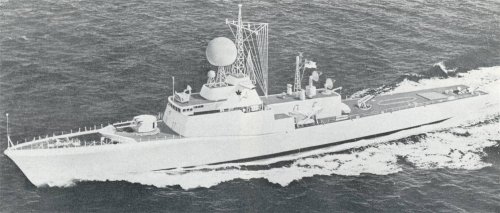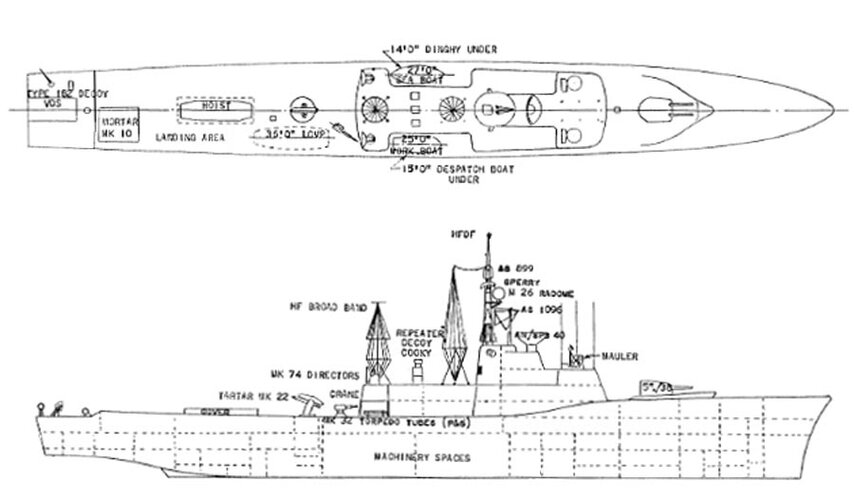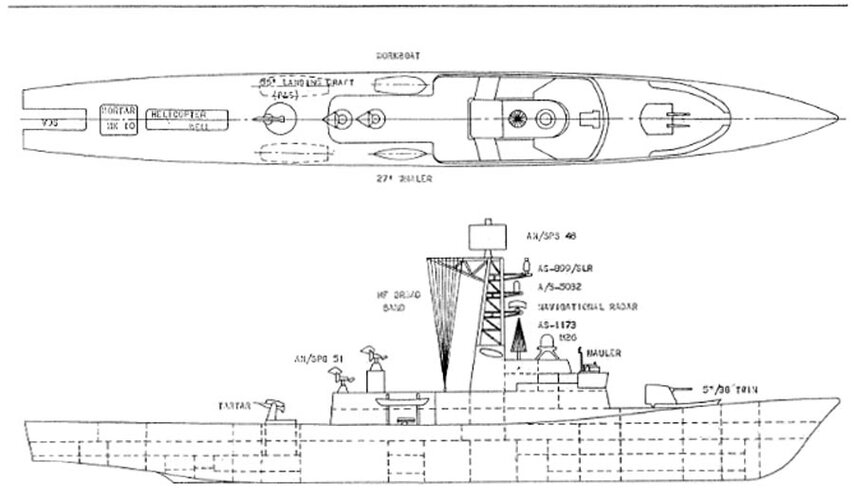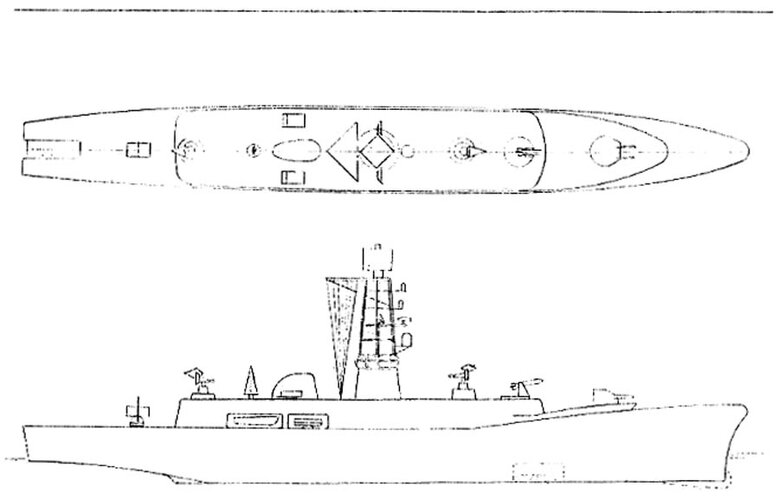Going waaay back, it was the General Purpose Frigate which was also referred to as the '
Tribal class frigate'. But this GPF was not an early design for that 'other'
Tribal class (aka
Iroquois DDH or DDH 280). Your "early design" was the 'Guided Missile Destroyer' - briefly considered in the Summer of 1964. By then, the General Purpose Frigate project had already been cancelled (on 10 Oct 1963).
Despite its 'frigate' designation, the GPF was to be bigger than the
Annapolis class destroyers - the final iteration of the
St. Laurent DEs. A rough size comparison chart follows (apologies for the funky formatting):
Vessel Class ----
Annapolis -- GPF ----- DDH 280 --
Halifax FFH
Displacement ---- 2,900 t --- 3,300 t --- 3,800 t ---- 4,770 t
Length (o/a) ------ 366 ft --- 398 ft --- 423.4 ft ---- 440 ft
Beam/Breadth ----- 42 ft ---- 46.0 ft --- 48.2 ft ----- 53.9 ft
Draught -------- 13.5/23.5 ft - 13.9 ft ---14.6/37.9 -- 16.1 ft
On the General Purpose Frigate, the
Tartars' Mk 22 GMLS mount was set aft - just forward of the hoist (in the March 1962 iteration) and just in front of the helicopter landing pad (for the Sept 1963 development).
Inclusion of the RIM-24
Tartar Missile System raised US equipment acquisitions costs for the GPF programme to more than $100M (over $970M in 2024 CAD). Beyond that, the
Tartar's AN-SPQ-51 directors were viewed as being 'shock limited'. So, no big surprise that the General Purpose Frigate project got dumped.
BTW, for closer-in defence, the GPF was also to have 2 x RIM-46A
Sea Mauler mounts above the bridge. By the time that the DDH 280 was designed, medium-range missiles had been abandoned altogether and the close-in
Sea Maulers had been replaced by
Sea Sparrows.
I'm attaching a couple of cleaned-up drawings of the General Purpose Frigate proposal - originally dated March 1962 and September 1963. Note that, on the 1962 sketch, the radar is not show enclosed (as per the artwork in reply
#2). By 1963, an AN/SPS-48 radar was mounted at mast-top and enclosed by a drum-shaped shroud.




